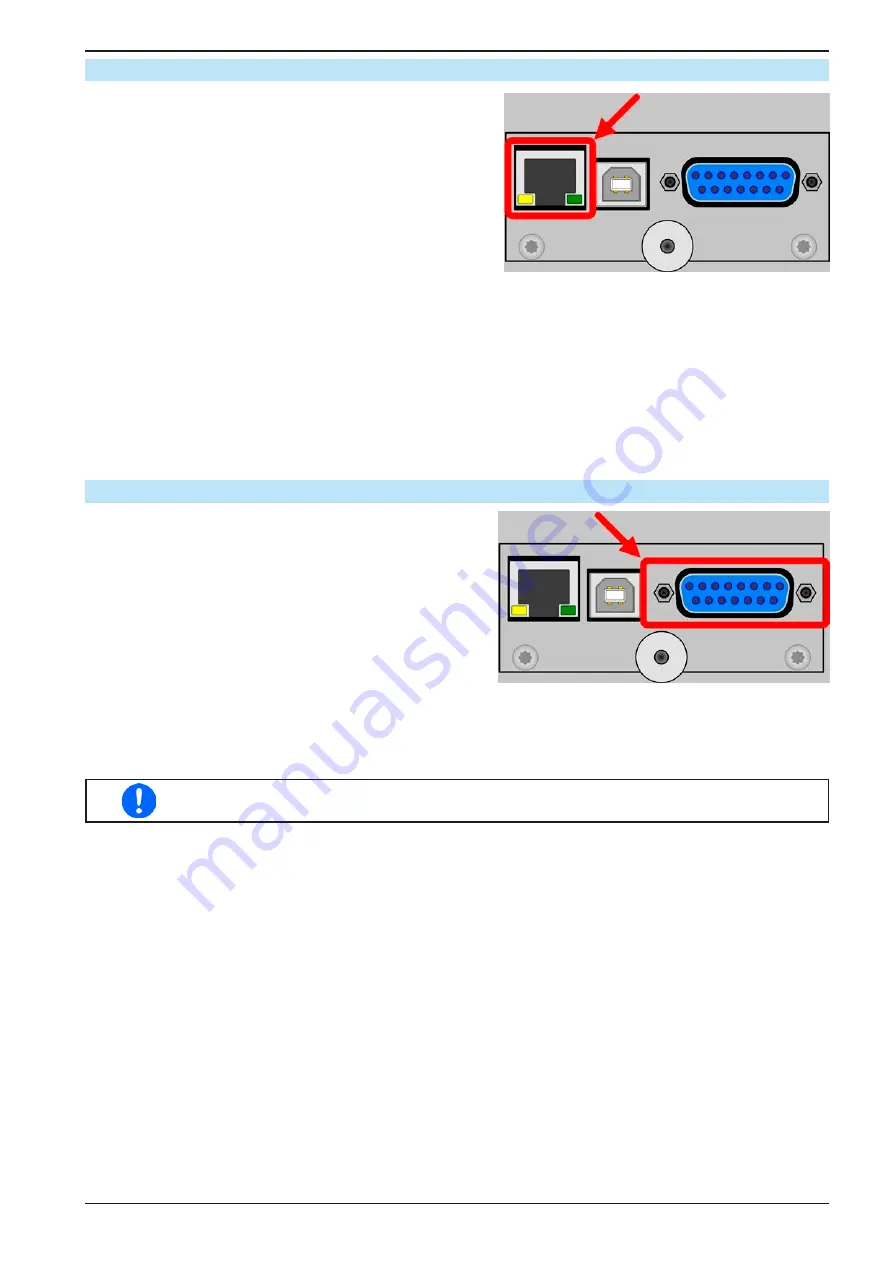
Page 28
EA Elektro-Automatik GmbH
Helmholtzstr. 31-33 • 41747 Viersen
Germany
Fon: +49 2162 / 3785-0
Fax: +49 2162 / 16230
www.elektroautomatik.de
PS 9000 T Series
1.9.8 Ethernet port
The Ethernet port is optional. Also see section
1.9.4
.
The port on the back side of the device is provided for com-
munication with the device in terms of remote control or moni-
toring. The user has basically two options of access:
1. A website (HTTP, port 80) which is accessible in a standard
browser under the IP or the host name given for the device.
This website offers to configuration page for network param
-
eters, as well as a input box for SCPI commands.
2. TCP/IP access via a freely selectable port (except 80 and
other reserved ports). The standard port for this device is 5025.
Via TCP/IP and this port, communication to the device can be
established in most of the common programming languages.
Using the Ethernet port, the device can either be controlled by commands from SCPI or ModBus protocol, while
automatically detecting the type of message.
The network setup can be done manually or by DHCP. The transmission speed is set to “Auto negotiation” and
means it can use 10MBit/s or 100MBit/s. 1GB/s is not supported. Duplex mode is always full duplex.
If remote control is going to be activated, the Ethernet interface has no priority over any other interface and can
therefore only be used alternatively to them. However, monitoring is always available, no matter if and via what
interface the device is remotely controlled.
1.9.9 Analog interface
The analog interface is optional. Also see section
1.9.4
.
This 15 pole Sub-D socket on the back side of the device is
provided for remote control of the device via analog or digital
signals.
The input voltage range of the set values and the output volt-
age range of the monitor values, as well as reference voltage
level can be switched in the settings menu of the device be-
tween 0-5 V and 0-10 V, in each case for 0-100%.
If remote control is going to be activated, the analog interface
has no priority over any other interface and can therefore only
be used alternatively to them. However, monitoring is always
available, no matter if and via what interface the device is
remotely controlled.
The analog interface is only analog (per definition of the word) to the outside. Internally it is
processed by a microcontroller which causes it to have a limited resolution and sample rate.
















































